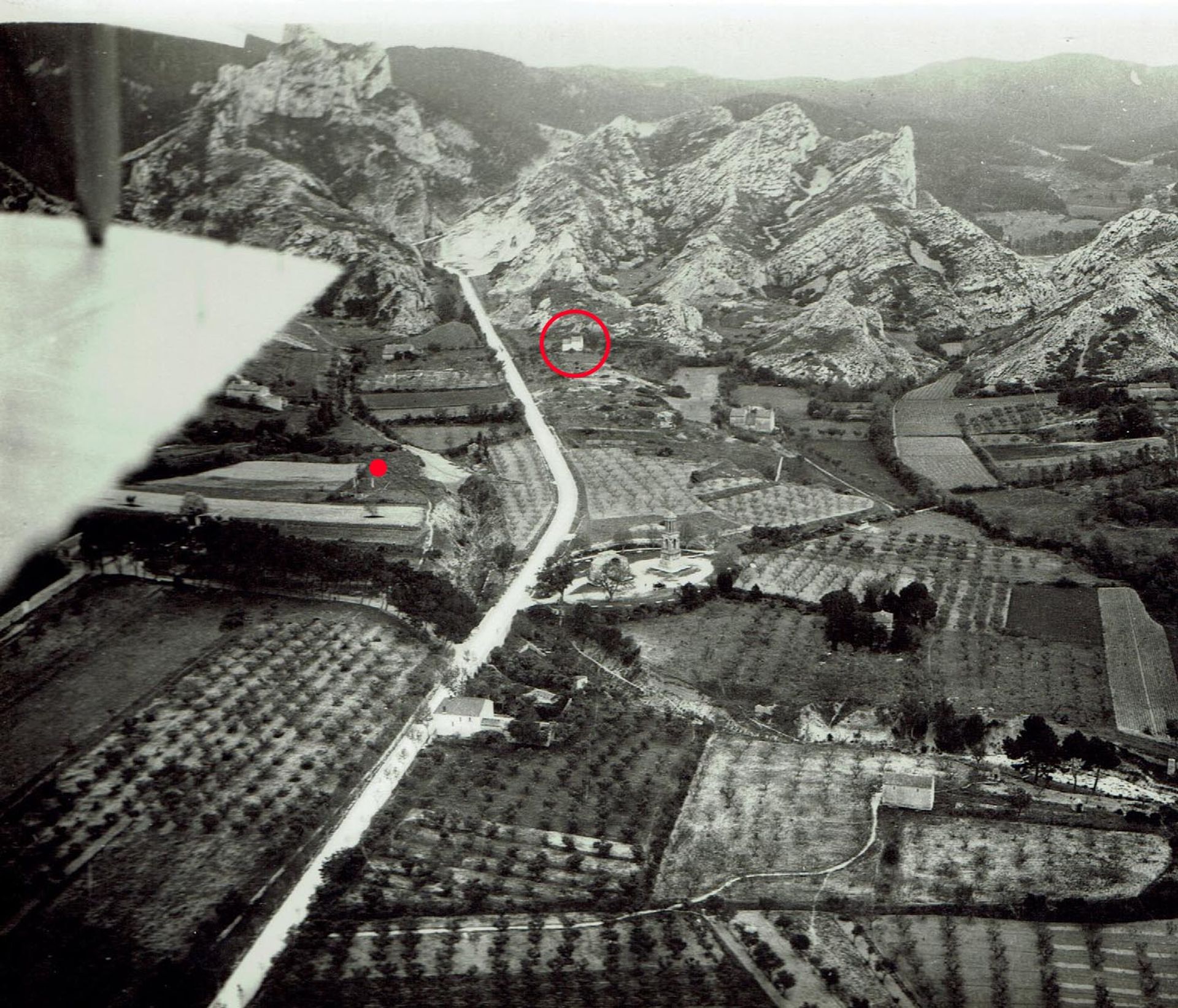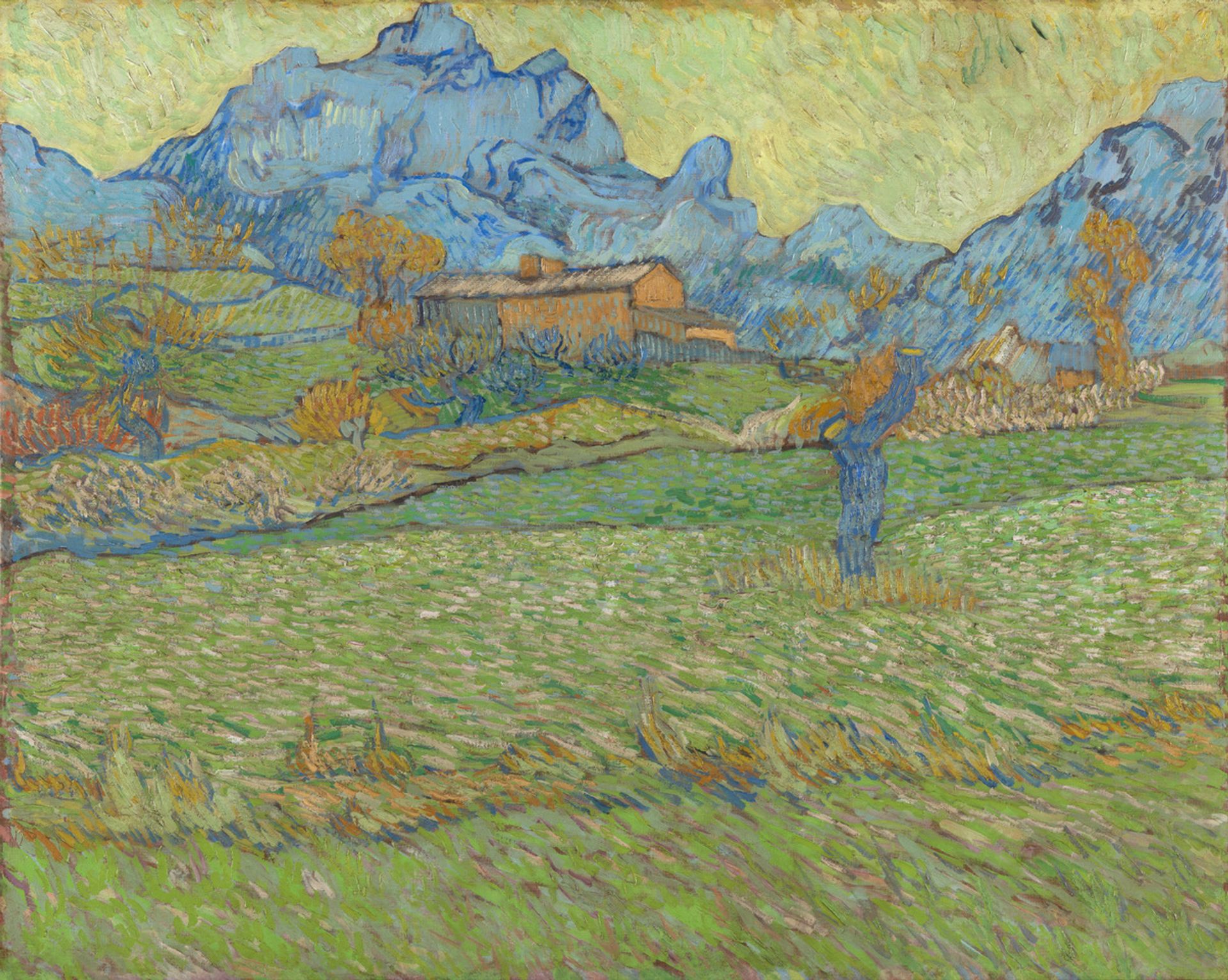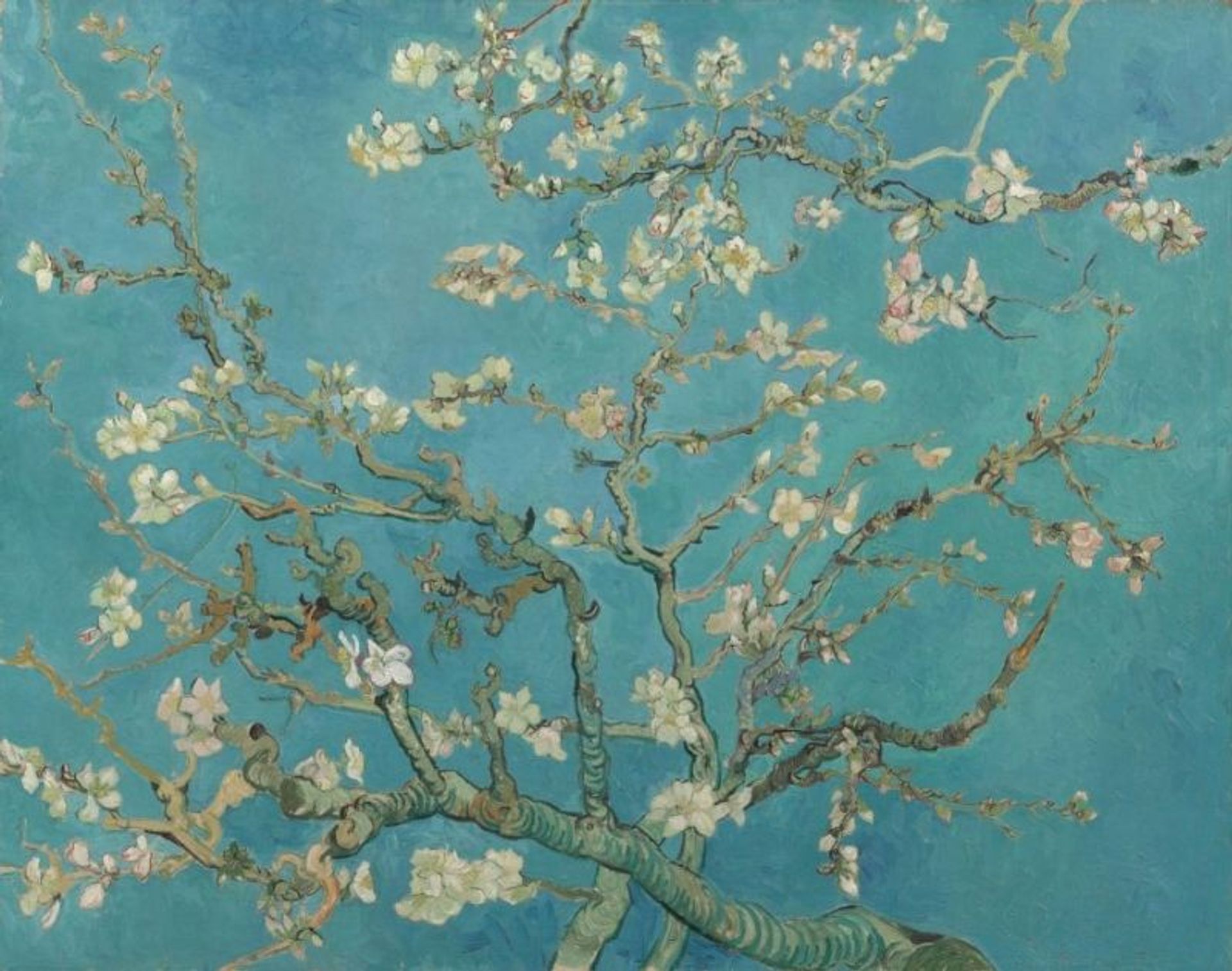Vincent van Gogh's painting Fields near the Alpilles (1889) is going on show for the first time ever, initially at Christie’s in London. Although no estimate has been given, it is expected to fetch around $45m when it comes up for sale at a May evening auction in New York.
Painted in November 1889, Van Gogh's powerful landscape has always been hidden away in private collections. The Christie’s catalogue entry, when published nearer the sale, will reveal that among the owners were the couturier Yves Saint Laurent and his partner Pierre Bergé.
Van Gogh set up his easel just five minutes’ walk from the gate of the asylum on the outskirts of Saint-Rémy-de-Provence, where he stayed for a year after mutilating his ear. Walking among the wheatfields and olive groves he could leave behind the stifling atmosphere of the mental institution, to explore the atmospheric Provençal countryside.
Vincent described the Christie’s painting in a letter to his brother Theo in simple terms, as “a wheatfield with a background of lilac mountains and a dark tree”. The wheat is beginning to sprout, a harbinger of spring, appearing in wave-like bands, with brushstrokes in greens, blues and creams.
A solitary almond tree with bare branches dominates the scene. Its stark outline suggests that Van Gogh was inspired by Japanese prints, which the artist so admired. The rugged trunk and branches seem alive, animating the composition.
Further away, visible between the two boughs, is a farmhouse beside a track. To the left of the left-hand branch, a row of emerald olive trees can be made out. These run along the road that climbs through a pass in the Alpilles.
Look more closely, and there is a giant tree just to the left of the olive grove, almost towering over the hills (Van Gogh often exaggerated the height of isolated trees in his landscapes).
The dramatic hills in the background, facing south, are the chain of the Alpilles, the little Alps. Although Van Gogh represented the limestone hills as lilac in his painting, they now appear light blue, possibly because he used some red pigment that has since faded—which so often happens with the artist’s reds. The contorted hills have been delicately painted, with careful brushwork.
The spot where Vincent made his painting has been identified by the Van Gogh Museum’s senior researcher Teio Meedendorp as an open area that is now known as the Parc d’Amour. He points out that the large rock in the right foreground probably came from an ancient quarry, which is very close by.

Aerial photograph of the area around the asylum of Saint-Paul-de-Mausole—Van Gogh was standing near the red spot and the farmhouse in the Fields near the Alpilles painting is circled, while three peaks in the Alpilles lie further away towards the horizon in the centre. The biplane aircraft wing appears on the left Photo: E. Michaud (before 1920); © Martin Bailey, all rights reserved
In July 1889, four months before completing Fields near the Alpilles, Van Gogh had been working at the entrance to the quarry. He was suddenly struck down by a mental attack and ate some of his paints, in an effort to self-harm.
Van Gogh quickly vomited, which may have saved him, although his throat was very badly swollen. For four days he was in agony and unable to eat, and even a month later he still found it painful to swallow and remained mentally disturbed.
Van Gogh was eventually able to resume work in early September and by the end of the month his doctor allowed him out into the countryside to work. Fields near the Alpilles was painted in November.

Van Gogh’s Wheatfields in a Mountainous Landscape (November-December 1889) Credit: Kröller-Müller Museum, Otterlo
A few days after painting Fields near the Alpilles he tackled a similar view, Wheatfields in a Mountainous Landscape, which is now at the Kröller-Müller Museum. The tree trunk on the far left in the Christie’s painting appears prominently in the Kröller-Müller work in blue.
And what happened to Fields near the Alpilles? Vincent wrote to his brother Theo on 4 January 1890 to say that the previous day he had dispatched two canvases to his friend Joseph Roulin, the postman, who had become his best friend in Arles while he was living at the Yellow House.

Van Gogh’s Portrait of Joseph Roulin (February-March 1889) Credit: Kröller-Müller Museum, Otterlo
Roulin had given Vincent great support after the ear incident. Although Roulin had moved to Marseille just one month later, the two kept in touch by letter.
As it had been on 4 January 1889 that Roulin had convinced the Arles hospital to release Vincent, initially for a few hours, the gift sent exactly a year later was probably a token of gratitude.
Roulin ended up with about a dozen paintings by Van Gogh and sold them in around 1900, most likely through an agent to the Parisian dealer Ambroise Vollard.
The first known collector who acquired Fields near the Alpilles was Paul Pompidor, who lived in Narbonne, on the Mediterranean coast. Little is known about the 20th-century history of the painting, but it was eventually bought by Saint Laurent and Bergé.
The painting had a special meaning for the couple, since Bergé had bought a pair of beautiful farmhouses, which he renamed Mas Theo and Mas Vincent, on the outskirts of Saint-Rémy-de-Provence, not far from the asylum. Saint Laurent was also an admirer of Van Gogh, producing a line of YSL designs with sunflower and iris motifs.
The couple sold Fields near the Alpilles in around 2003, before their deaths (Saint-Laurent in 2008 and Bergé in 2017).
Looking back on Van Gogh’s time, the almond trees had already shed their leaves when he painted Fields near the Alpilles in November. But just three months later they would become the first fruit trees to blossom. In February 1890 Van Gogh was excited to see their white, fragrant blossom; a sign that spring was on the way.

Van Gogh’s Almond Blossom (February 1890) Credit: Van Gogh Museum, Amsterdam (Vincent Van Gogh Foundation)
Vincent found an almond tree near the asylum (but not the one in Fields near the Alpilles) and got to work, portraying several branches against a sky-blue background. He decided to make it a special gift to Theo and his new wife Jo, to celebrate the birth of their first child and his godson—named Vincent, in his honour. One can hardly imagine a painting that is more full of life.
Fields near the Alpilles is now on display at Christie’s in London until 1 March. The painting will then tour with other highlights of the auction to Taipei and Hong Kong, before returning to New York, where it will be on display before Christie’s 20th Century evening sale on 12 May.




